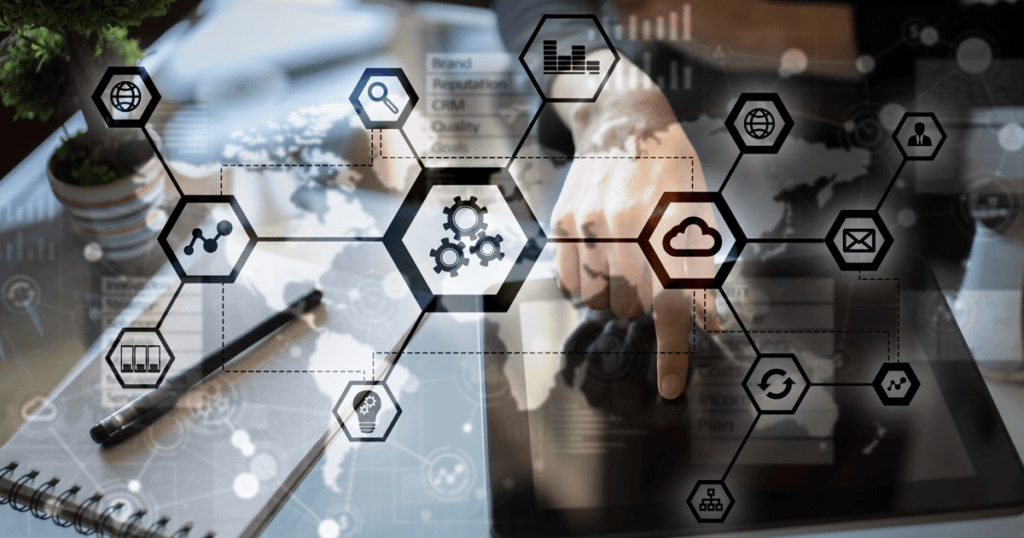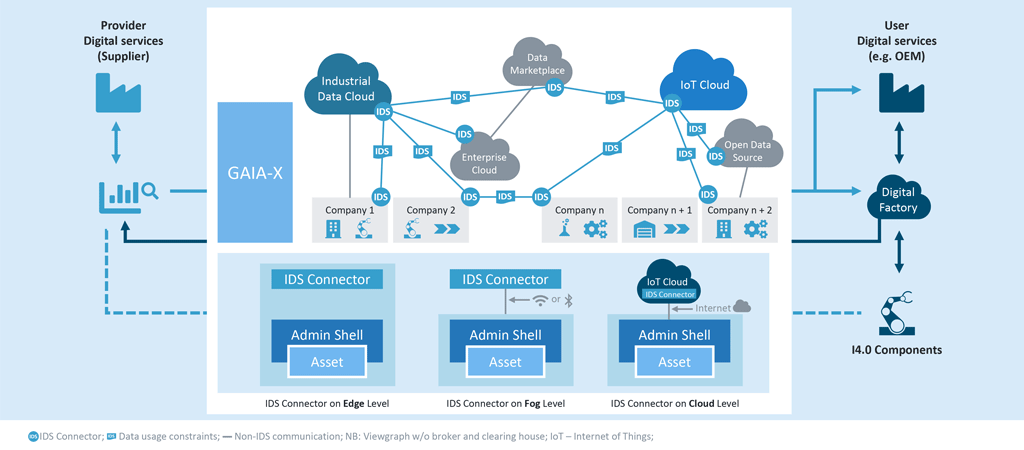Digital Value Chains are Transforming B2B-Integration – From EDI to IDS?

Digital transformation is changing the entire value chain. Data is increasingly becoming a commodity. As data-driven business models are becoming more prevalent, we are seeing an increasing number of fully-digital value chains. In some cases, these are full networks, requiring new forms of B2B integration. Is digital value creation moving away from the classic EDI (Electronic Data Interchange) to IDS (International Data Spaces)?
B2B integration along a traditional value chain
B2B Integration through EDI (Electronic Data Interchange) has always been about increasing the productivity of a value chain. Originating in the automotive industry, call off orders and just-in-time / just-in-sequence (JIT/JIS) processes have since become established in many other industries.
The work of the Efficient Consumer Response (ECR) community has helped streamline processes for consumer packaged goods (CPG). Techniques such as continuous replenishment, where goods are automatically re-ordered based on actual sales, or cross-docking, just wouldn’t be possible without EDI. But EDI has always been about optimising value chains for physical goods.
There is still ample potential to expand the use of EDI in supply chains, such as implementing ECR approaches, for customer services or for tracking orders across end-to-end supply and production chains. Other areas, such as e-invoicing, are also finally becoming more widespread.
Digitalisation and B2B integration: the new digital value chain
The increasing digitalisation of all areas of our work and private lives has made digitalisation a hot topic. However, the technical discussions of whether processes are more efficient if set up as XML, over an API, with block chain technology or through classic EDI tend to be in the background. From a business perspective, the discussion at the forefront is how digitalisation and networked objects (Internet of Things – IoT), is changing how items are being bought and used, and the effect this has on how a company’s processes need to be set up and run.
Data and data-driven smart services play a key role in the above. Data needs to flow between objects, people and companies, while still adhering to ethics relating to fair competition, self-determination and social equity.
Digital value chains or networks are just not possible without efficient, effective B2B integration.
Interoperability – a core requirement of industry 4.0
Mainstays of a digital value chain
IoT and Industry 4.0 are oft-cited buzzwords which have encroached into the real business world. In the automotive industry at present, kick-started by the OEMs, there are new platforms springing up to network digital twins with their own resources and the resources needed along the entire production and supply chains. These digital twins are part of the data infrastructure for smart services and enable analysis in real time as well as direct access to systems and optimisation through the use of AI (Artificial Intelligence). Each of the OEM’s suppliers can become a part of these smart services, or set up their own digital services.
One challenge for the supplier is to demarcate the data flows to and from their various customers and suppliers. This is a particularly pertinent issue if smart services need to be used or offered within a multi-cloud strategy.

Most of these approaches require or involve building large platforms based on the infrastructure and services of hyper-scalers such as AWS, Microsoft, Google or Alibaba. Inevitably, this creates concentration points such smart phone operating systems (iOS, Android), or those we know from e-commerce, like Amazon. This is not considered a suitable model for B2B integration. The GAIA-X initiative is a European attempt to create an open, federal data infrastructure without these previously inevitable concentrations. The hope is that GAIA-X will become a mainstay of the digital value chain. Alongside suitable forms of IT infrastructure for decentralised and distributed data processing (edge cloud infrastructure), at the heart of the GAIA-X approach are open, federated data structures with transparency in how services are provided and used. This envisages creating and using data spaces to exchange data along the principles of the international data spaces (IDS).
Among great political interest and extremely broad industry support, many projects such as the Catena-X network (german only) and the FENIX network are working on developing the essential mechanisms and instruments that will significantly shape the B2B process for smart services.
Extending B2B integration to digital value chains
Data and process integration needs to be consistent and interoperable all the way along the chain, down to the individual apps and the micro services running on edge devices.
Initially, this can be done by calling on individual services (APIs or apps) supported by International Data Spaces (IDS), which are then integrated into an organisation’s in-house IT system. This is then followed by integrating external elements and providing your own services either with, or for your business partners.
In all of this, the importance of hybrid integration platforms is going to increase significantly, particularly for application-neutral business integration. These will enable individual objects down to small sensors to be networked over all levels of the IT/OT infrastructure (cloud/fog/edge computing).
A holistic B2B integration approach is crucial for companies to be able to secure and transform internal to external communication, i.e. the harmonious interaction from EDI to IDS, in order to remain an active player in the digital value chain.
Thank you for your message
We appreciate your interest in SEEBURGER
Get in contact with us:
Please enter details about your project in the message section so we can direct your inquiry to the right consultant.
Written by: Frank Stegmueller
Frank Stegmüller is one of the two corporate information security officers at SEEBURGER and has been with the company since 2008. He has over 25 years of experience in service, support and information security for Enterprise Application Integration, EDI, B2B, MFT, API, ITSM and digital transformation - both on in-house systems and from the cloud. He is involved in the ISO/IEC 27001, ISAE 3402 (SOC 1) Type 2 and TISAX certification for SEEBURGER Cloud Services and knows all about the intricacies of compliant data centre operations in international environments.





